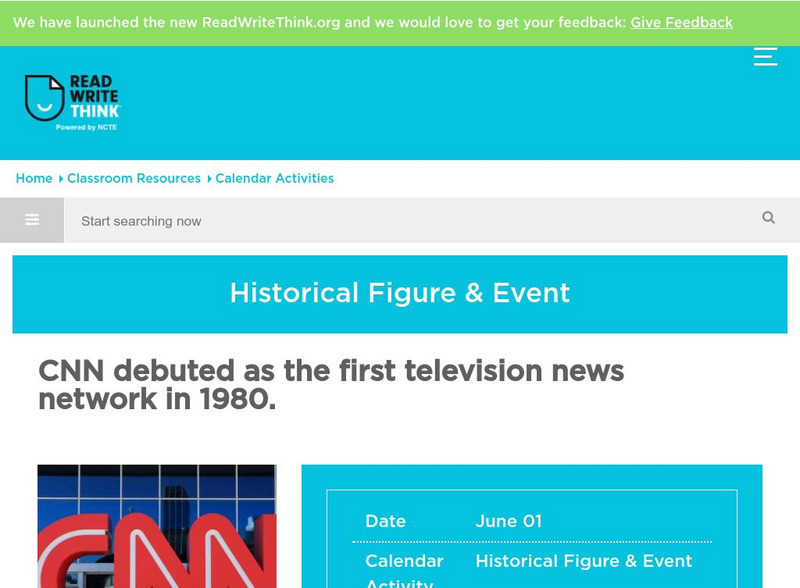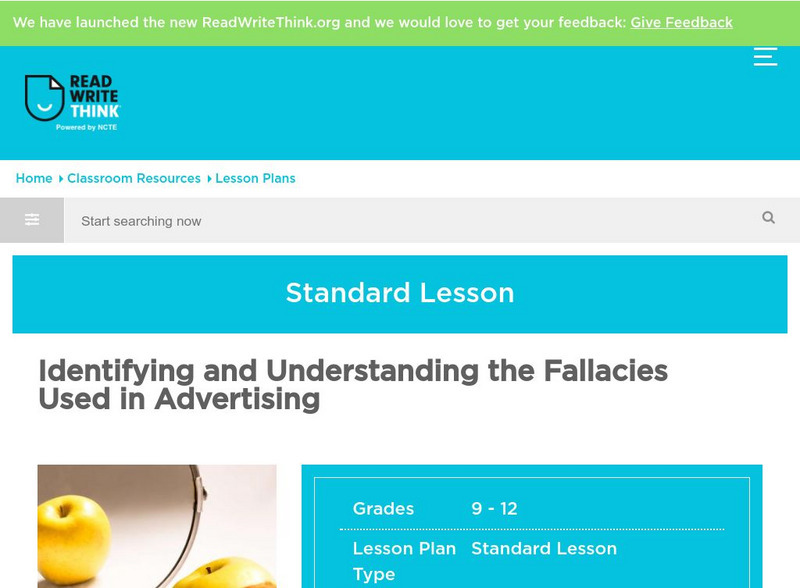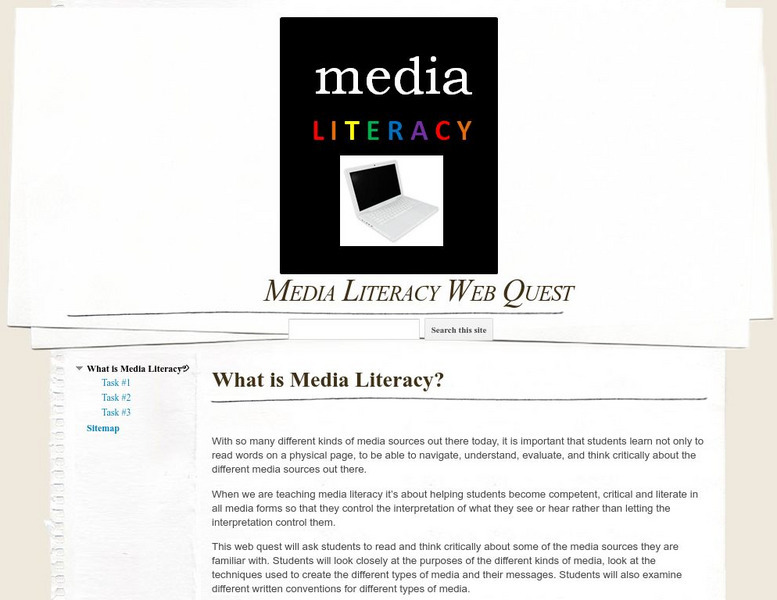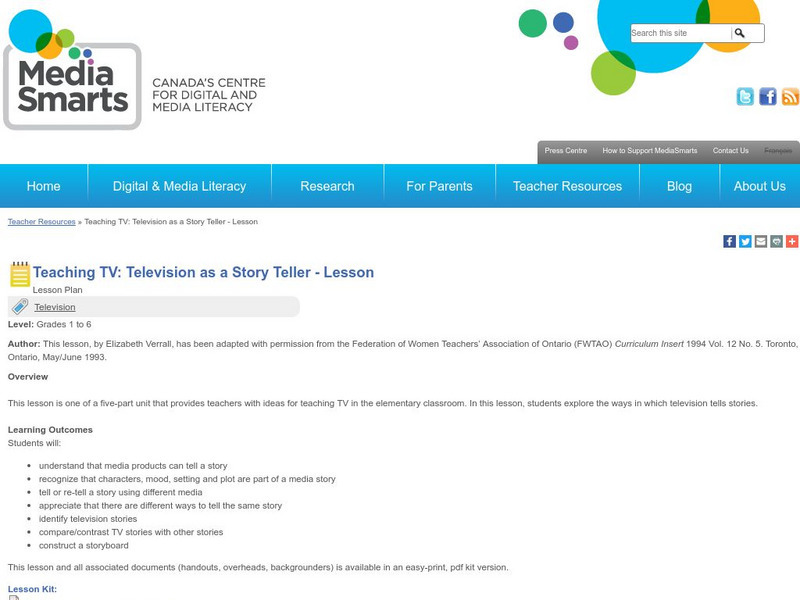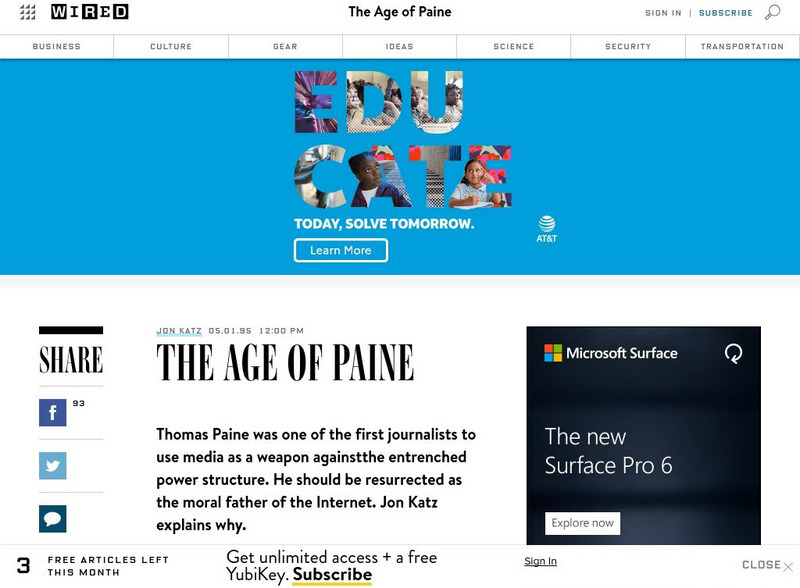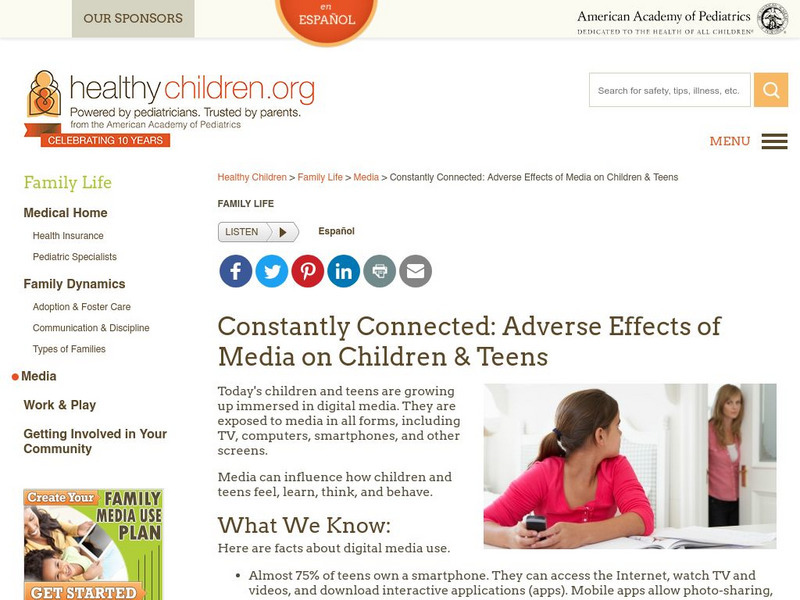Other
Journal of Contemporary Art
The Journal of Contemporary Art includes interviews with new and upcoming artists, discussions and projects.
Other
California Newsreel: Videos on African American Life
This company claims to be the "oldest and most notable non-profit documentary production and distribution center in the nation." It offers a rich collection of videos on all aspects of African American life and history: e.g., Academy...
Other
Before and After: The New Face of Nightly News
Interesting article follows the return of "hard" news to the 3 evening newscasts from June to October 2001. Includes infographics and source material.
ReadWriteThink
Read Write Think: Cnn Debuted as the First Television News Network in 1980
These lesson plans relate to the gathering and production of news and creating a visual timeline. There are links to other lesson plan ideas, as well as web links, and a brief bibliography. SL.11-12.2 Eval&Integrate sources
ReadWriteThink
Read Write Think: Identifying and Understanding the Fallacies Used in Advertising
Students examine the fallacies that surround them every day, deconstruct fallacious images and messages in advertisements, and demonstrate their understanding of the fallacies through multimedia presentations.
Other
Fair: Retractions of Reporting Are Quite Selective
Interesting essay on the use of unnamed or anonymous sources, accuracy of reports, and retractions of innaccurate reports by major news outlets. Eye opener.
Other
What Is Media Literacy?
This web quest will ask students to read and think critically about some of the media sources they are familiar with. Students will look closely at the purposes of the different kinds of media, look at the techniques used to create the...
Media Smarts
Media Smarts: Teaching Tv: Television as a Story Teller Lesson
This lesson plan will help young students explore how television can be used to tell stories.
Other
First Grade Fun: Media Literacy
This module from a resident educator named Ms. Hernandez shares resources that explain how to discuss media images with their young children.
Other
Media Activist's Kit for Fairness in Reporting
This site offers the whole package about bias in reporting: what it is, how to identify the source, how to complain about it and be heard, and what to do if all else fails. The site offers an extensive reading list along with detailed...
Other
Ire: Investigative Reporters and Editors
This non-profit group was created in 1975 as a networking tool for the exchange of ideas and attitudes concerning the quality of investigative reporting for the media. Site is newsletter-style with up-to-date information.
Other
The Bismarck Tribune: Homepage
This is the online homepage for the Bismarck Tribune, the local newspaper for Bismarck, North Dakota.
Other
The Star Ledger
The Star Ledger is the daily newspaper publication for the city of Newark, New Jersey. The Star Ledger features sections on news, business, sports and entertaiment.
Other
Wired.com: The Age of Paine
An article from Wired Magazine describing Paine's use of the media to support the Revolution and comparing it to use of modern media such as TV, radio and the Internet.
Other
Student Press Law Center: Student Press Law Center
Based in Virginia, this site provides legal help and information to student journalists and journalism teachers.
Other
Knight Lab: Juxtapose
Juxtapose helps storytellers compare two pieces of similar media, including photos, and GIFs. This site will teach you how to juxtapose two images. It is free, easy to use, and works on all devices. All you need to get started are links...
PBS
Pbs Learning Media: How Technology Changed the Way Candidates Run for President?
This lesson plan focuses on how technology has changed Presidential election campaigns. It includes reading articles and conducting research.
PBS
Pbs Learning Media: What Is Social Media's Role in Election 2016?
In this lesson plan, students examine the different ways candidates use social media, including Instagram, Facebook, and Twitter in their presidential campaigns. They will watch videos, read articles, and examine candidates' social media...
TED Talks
Ted: Ted Ed: The Key to Media's Hidden Codes
Video that describes the types of codes that media and advertisements use to affect the way that people think, act, and feel. [6:00] Followed by a short quiz and a list of additional resources to explore.
Alabama Learning Exchange
Alex: Whose Voice Guides Your Choice?
In this one-two week unit, students explore the role media has in influencing public opinion. Students analyze advertising in print, video, and online formats. An optional visit to the Museum of Television and Radio via distance learning...
Other
Aap: Constantly Connected: Adverse Effects of Media on Children & Teens
This article shares information about the adverse effects of the media on children's health.
iCivics
I Civics: Propaganda: What's the Message?
Students will learn what propaganda is and how it uses different techniques to sway public opinion by looking at examples of advertisements and campaigns used by governments and private businesses.
University Corporation for Atmospheric Research
Ucar: Weather in the News
In this activity, students will compare stories about a weather event from different media sources and different perspectives.
PBS
Wnet: Thirteen: Lesson Plan: How Media Shapes Perception
Interesting lesson that allows students to explore the messages and influence of the media, especially on young minds. Objectives, standards, and procedures included for teachers.





